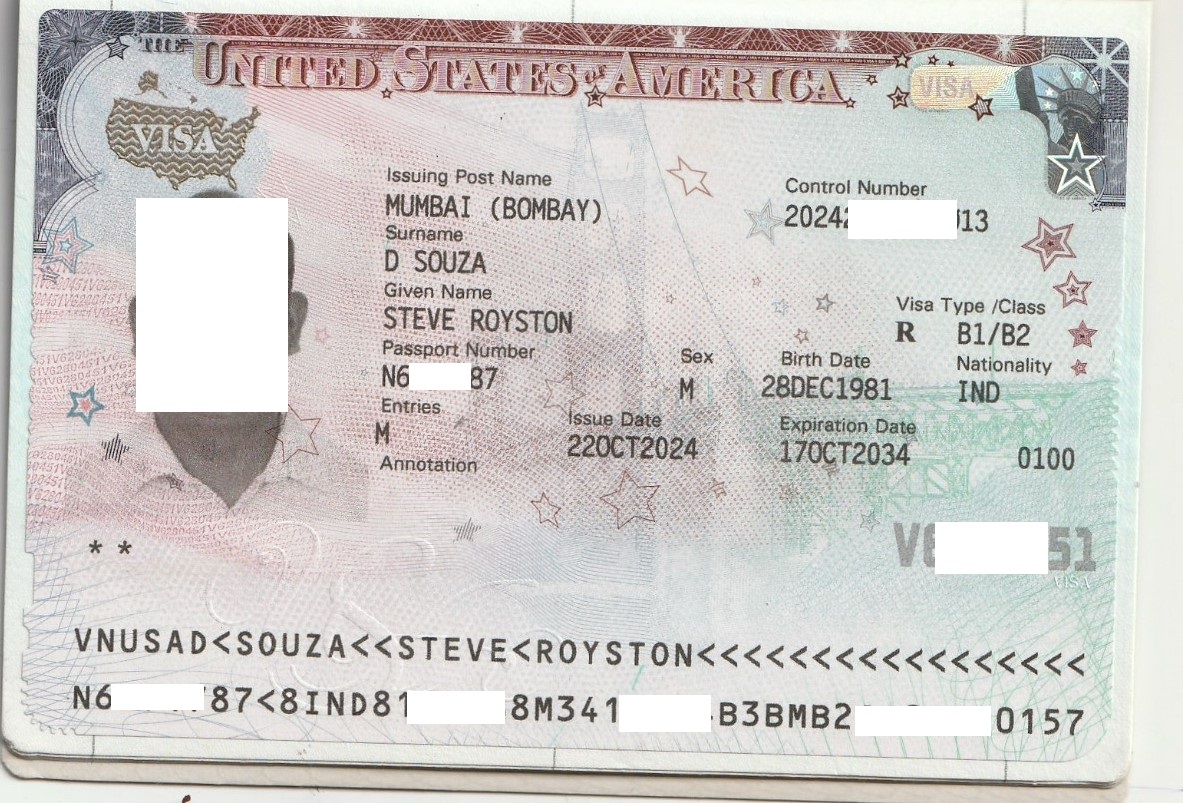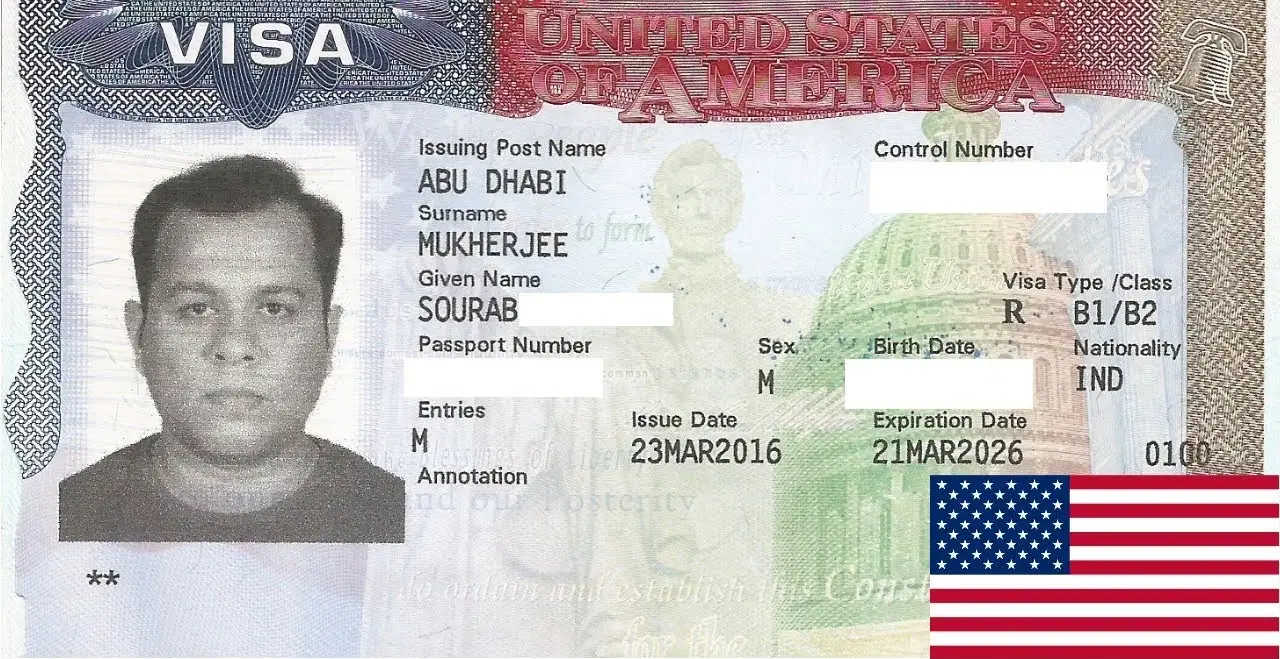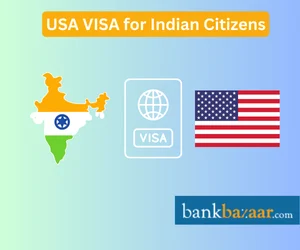Types Of US Visas: Eligibility, Requirements, and Application Process
Opening Opportunities: Vital Information on US Visas for Indian People
Maneuvering the complexities of united state visa options is important for Indian people aiming to discover chances in the USA. With different categories varying from temporary visitor visas to pathways for irreversible residency, comprehending the subtleties of each can markedly impact one's trip. This discussion will highlight crucial details, including application treatments and qualification standards, that can equip individuals in their pursuit of new experiences. As we unpack these important facets, the question arises: what strategies can one employ to improve their possibilities of an effective application?
Introduction people Visa Types
When going across the facility landscape of US migration, comprehending the different kinds of visas offered is important for Indian citizens seeking entry right into the USA (US Visas For Indian Citizens). The United States migration system is largely categorized right into 2 wide classifications: immigrant visas and non-immigrant visas
Immigrant visas are designated for those meaning to live permanently in the US. These include family-sponsored and employment-based visas, where candidates commonly require an enroller. Non-immigrant visas, on the various other hand, satisfy individuals looking for momentary house, such as travelers, service visitors, and those taking a trip for certain objectives like job or research.
Within the non-immigrant group, numerous visa kinds exist, consisting of B-1/ B-2 for business and tourism, H-1B for specialized line of work, L-1 for intra-company transferees, and O-1 for individuals with amazing capabilities. Each visa has distinct qualification demands and application procedures, demanding detailed research study to determine the ideal group.
Recognizing these classifications is important for Indian people, as it enables them to navigate the application process more efficiently, guaranteeing they pick the right visa type to meet their specific demands and goals. US Visas For Indian Citizens.
Trainee Visa Options
For Indian people aiming to research in the United States, pupil visas provide a crucial path to go after academic chances. The main visa classifications for pupils are the F-1 and M-1 visas.
The F-1 visa is designated for scholastic trainees enrolled in a permanent program at a certified organization, such as universities and colleges. This visa enables trainees to take part in on-campus work and, under certain conditions, take part in optional useful training (OPT) after finishing their degree, supplying important work experience in their area of study.
Alternatively, the M-1 visa is intended for trade or non-academic programs. It provides to students going after technological or professional training, allowing them to enroll in non-degree programs. M-1 visa holders might take part in practical training, however it is normally extra limited contrasted to the F-1 classification.
To get a pupil visa, applicants must protect admission to a united state institution, obtain a Kind I-20, and show financial capability to sustain their education and learning and living expenses. Comprehending these visa alternatives is considerable for Indian people preparing to start their academic journey in the United States.
copyright Categories
Lots of Indian people seeking employment possibility in the USA might consider different copyright classifications customized to different expert requirements and credentials. One of the most noticeable copyright is the H-1B visa, created for experienced workers in specialized line of work calling for a greater education and learning level or its equivalent. It enables U.S. employers to temporarily utilize foreign workers, with a cap on the number of visas provided annually.
One more essential category is the L-1 visa, which helps with the transfer of workers within international business. The L-1A visa is for managers and executives, while the L-1B visa is for workers with specialized knowledge.
The O-1 visa caters to people with phenomenal abilities in their field, including scientific research, arts, or organization. For farming or seasonal job, the H-2A and H-2B visas are readily available, allowing employers to hire foreign workers for short-lived settings.
Family-Based Migration
Family-based migration supplies a pathway for united state people and legal permanent residents to rejoin with their loved ones from India. This migration group is essential for maintaining domestic bonds and promoting the integration of member of the family right into American culture. U.S. people can request for immediate relatives, including partners, kids, and moms and dads, without encountering yearly limits on visas. This expedited procedure considerably reduces waiting times for these close family links.
In contrast, authorized permanent homeowners may fund spouses and single kids, yet they go through yearly caps, resulting in longer wait times. The family-sponsored immigration system is separated into 2 major categories: prompt family members and family members preference groups. The former consists of those that have a straight relationship with a united state person, while the last encompasses farther loved ones, such as siblings and wedded kids of citizens, and children of legal long-term residents.
For Indian residents seeking family-based migration, comprehending the subtleties of this system is critical. Appropriate paperwork and adherence to application protocols are necessary for effective sponsorship. By steering through these intricacies, families can function towards rejoining and building their lives together in the USA.
Irreversible Residency Process
The procedure of obtaining permanent residency in the USA involves several crucial visa groups customized for Indian citizens. Comprehending the application actions, consisting of required documents and qualification criteria, is website vital for a successful end result. Additionally, prospective applicants should understand the expected timeline and particular demands associated with each group.
Visa Categories Summary
While traversing the complexities of the united state migration system, Indian citizens seeking permanent residency should acquaint themselves with numerous visa groups customized to various conditions. The main path for long-term residency is through employment-based visas, which are classified into a number of preferences, including EB-1 for people with phenomenal capacities, EB-2 for specialists holding postgraduate degrees, and EB-3 for competent workers. Each category has specific qualification demands and processing times.

Variety visas, although limited in number, give a possibility for people from underrepresented countries to use for long-term residency with a lottery game system. Additionally, altruistic choices such as asylum and evacuee standing offer paths for those dealing with mistreatment.
Recognizing these visa groups is essential for Indian people, as they considerably influence the technique for getting long-term residency in the USA. Each category's nuances and needs demand cautious consideration to align with private conditions and goals.
Application Process Actions
Guiding the application process for long-term residency in the United States entails several vital steps that need to be thoroughly complied with to ensure a successful result. The trip normally begins with figuring out the appropriate migration category, such as employment-based or family-sponsored visas. Applicants need to collect important documents, including proof of eligibility, monetary declarations, and personal recognition.
Once the classification is recognized, the next step is to submit the Kind I-130 (Application for Alien Relative) or Kind I-140 (Immigrant Petition for Alien Worker), depending upon the basis of the application. Adhering to the approval of the petition, candidates will certainly require to complete the National Visa Center (NVC) processing by submitting the needed costs and types.
Next, the applicant needs to go through a medical exam and acquire cops clearance certifications. When these are completed, an interview will certainly be arranged at the U.S. consulate or consular office. It is essential to prepare extensively for this meeting, as it can substantially influence the decision on the application. Upon authorization, the candidate will certainly get their visa, approving them long-term residency in the United States.
Timeline and Needs
Charting the timeline and requirements for acquiring irreversible residency in the USA is crucial for Indian citizens seeking to develop a lasting visibility. The procedure primarily depends upon employment-based or family-sponsored pathways, each with details requirements and timelines.
For employment-based immigration, the procedure commonly begins with a labor accreditation, which can take several months. Once approved, the company files a Form I-140, Immigrant Petition for Alien Employee, which can take an extra six months to a year, depending on the handling. Complying with I-140 authorization, applicants might need to await their concern date to come to be current, which can differ considerably based upon the candidate's category and native land.
For family-sponsored migration, U.S. citizens can seek for prompt loved ones, which usually causes faster processing. However, various other family classifications might include longer wait times due to annual caps.
Application Treatments
Understanding the application treatments for United States visas is important for Indian residents looking for access right into the United States. Types Of US Visas. This section will certainly supply an overview of numerous visa categories and lay out the step-by-step process for applying. By complying with these guidelines, applicants can navigate the intricacies of the visa successfully
Visa Categories Summary
Maneuvering the numerous visa classifications available to Indian people can be a complex procedure, but it is essential for those looking for to take a trip, function, or study in the United States. The united state visa system is classified largely right into non-immigrant and immigrant visas, each serving distinctive purposes.
Non-immigrant visas, such as B-1/ B-2 for service and tourist, F-1 for scholastic study, and H-1B for specialized employment, permit momentary keeps. Applicants have to demonstrate their intent to go back to India after their see.
On the other hand, immigrant visas, including family-sponsored and employment-based classifications, give a path to permanent residency. These visas commonly need sponsorship from a relative or employer in the U.S., in addition to an extensive application process.

Step-by-Step Refine
Usually, the application procedure for U.S. visas includes a number of vital steps that applicants have to diligently comply with to guarantee a smooth experience. The primary step is to determine the appropriate visa category based on the objective of traveling, such as job, research, or tourist. Once the classification is recognized, candidates have to complete the on-line DS-160 kind, supplying exact individual information and travel information.
After sending the DS-160, candidates ought to pay the visa charge, which varies by visa type. Next, schedule a consultation for a visa meeting at the nearby U.S. Consular office or Consulate. US Visas For Indian Citizens. It is vital to plan for the interview by celebration needed documents, consisting of a legitimate ticket, visa confirmation, charge settlement receipt, and any sustaining paperwork certain to the visa group
On the day of the interview, arrive promptly and gown properly. During the interview, be prepared to address concerns regarding your traveling objectives, economic security, and connections to India. If authorized, the visa will be marked in the copyright, enabling for travel to the United States. Adhering to these steps assures an efficient and effective copyright procedure for Indian citizens.
Tips for a Successful Application

Make certain that all types are finished accurately and honestly. Tiny errors or omissions can bring about delays and even rejections. It is a good idea to collect all required sustaining documents, including economic declarations, employment letters, and evidence of ties to India, which show your intent to return post-visit.
Plan for your visa interview by exercising feedbacks to typical questions associated with your travel strategies and background - How To Get US Visa From India. Confidence and clearness can considerably influence the officer's impression. Lastly, take into consideration seeking aid from trustworthy immigration experts if you feel overwhelmed
Regularly Asked Questions
What Are the Handling Times for United States Visa Applications?
Handling times for united state visa can differ substantially based on the visa kind, application volume, and the candidate's location - Types Of US Visas. Usually, candidates should prepare for a processing duration varying from a few weeks to a number of months
Can I Adjustment My Visa Standing While in the US?
Yes, individuals can alter their visa status while in the United States, supplied they satisfy qualification needs and adhere to proper treatments. It is critical to submit the appropriate application with U.S. Citizenship and Migration Provider (USCIS)
Are There Age Limits for US Visa Applicants?
There are normally no details age limits for U.S. visa applicants; nevertheless, certain visa categories may have age-related eligibility criteria. It is very important to review the needs for each and every visa type to guarantee compliance.
What Are Usual Factors copyright Denial?
Usual reasons copyright denial consist of not enough economic resources, failure to show connections to the home nation, insufficient application, lack of appropriate paperwork, previous migration offenses, and failure to meet qualification standards for the particular visa category.
Just How Can I Appeal a Visa Denial Choice?
To appeal a visa denial, examine the consular policeman's factors, gather supporting paperwork, and submit a formal attract the appropriate authority, making sure to stick to defined timelines and procedural needs for the charm procedure.